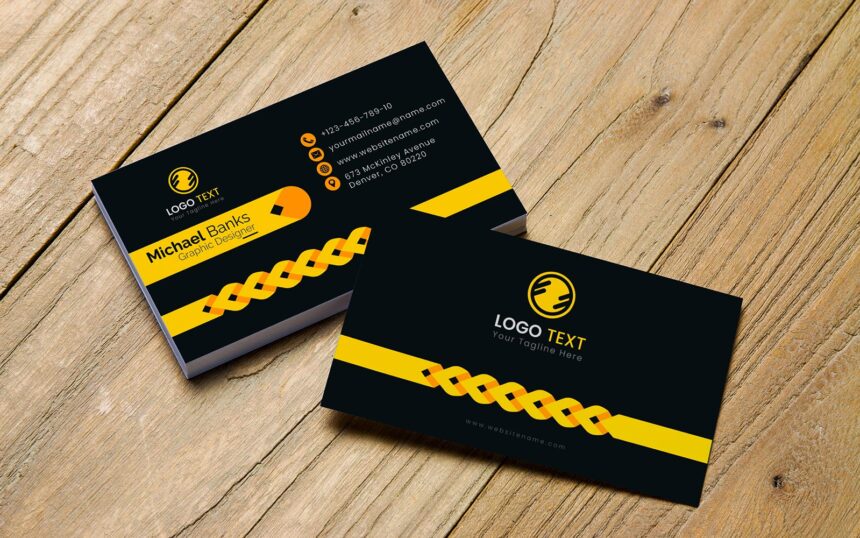In a world where digital interactions dominate, the humble business card holds its ground as a timeless networking tool. Whether you’re attending a conference, meeting new clients, or simply connecting with peers, these small pieces of cardstock can leave a lasting impression. They represent your brand and serve as a tangible reminder of who you are and what you offer. But have you ever wondered about the variety available? From traditional designs to innovative digital formats, there’s so much more to explore when it comes to business cards Let’s dive into the different types available and discover which one suits your unique needs best!
What are Business Cards?
Business cards are small, printed cards that typically contain essential information about an individual or business. They serve as a convenient way to introduce oneself and share contact details in face-to-face interactions.
Usually, these cards feature your name, job title, company logo, phone number, email address, and sometimes even social media handles. Their compact size makes them easy to carry around and distribute at networking events.
Beyond mere practicality, business cards also reflect personal branding. The design choices—from colors to fonts—can convey professionalism or creativity depending on the industry you’re in.
In essence, they act as a physical reminder of your connection with someone. Even in our tech-driven age, the impact of handing someone a well-crafted business card can be profound and memorable.
The Evolution of Business Cards
Business cards have come a long way since their inception. Initially, they served as calling cards for the elite in 15th-century Europe. These simple cards indicated social status and were often ornately designed.
As commerce expanded, so did the purpose of business cards. By the 19th century, they became essential tools for networking among merchants and professionals. Printing advancements made them more accessible to everyone.
Fast forward to today, digital technology has redefined how we use business cards. While traditional paper versions remain popular, virtual options are gaining traction. QR codes can link to online portfolios or contact information.
Now, creativity knows no bounds. From minimalist designs to artistic expressions featuring bold colors and unique shapes—business cards reflect personal branding like never before.
Traditional Paper Business Cards
Traditional paper business cards have stood the test of time. They offer a tangible way to share your contact information, making them essential in networking.
These cards come in various sizes, materials, and finishes. You can choose from glossy or matte finishes, thick cardstock for durability, or textured options for a unique touch.
The design possibilities are endless too. From minimalist styles to vibrant graphics and logos—your card can reflect your personality and brand identity.
Despite the rise of digital alternatives, many still prefer exchanging these physical cards at events. It creates a personal connection that often leads to meaningful conversations.
Carrying a stack of well-crafted business cards ensures you’re always prepared to seize opportunities when they arise. In an increasingly digital world, offering something tangible can leave a lasting impression.
Digital Business Cards
Digital business cards are the modern twist on traditional networking tools. They leverage technology to share contact information seamlessly.
With just a tap or a click, you can send your details directly to someone’s smartphone. This instant exchange saves time and reduces the need for physical cards that often end up tossed aside.
Many digital options allow customization with logos, images, and links to social media profiles. Some even integrate video introductions, making connections more personal and engaging.
Environmentally friendly, these cards eliminate paper waste. Plus, they’re easily updated—if your phone number changes or you get a new job title, your contacts will always have the latest info without needing reprints.
As remote networking becomes more common, digital business cards offer convenience and innovation in building professional relationships.
Unique and Creative Business Cards
Unique and creative business cards stand out in a sea of traditional options. They can leave a lasting impression, sparking conversations before you even say a word.
Consider materials beyond the standard cardstock. Wood, metal, or transparent plastic can add texture and intrigue. A tactile experience engages potential clients on another level.
Design plays a crucial role too. Think outside the box—shapes that differ from rectangles grab attention instantly. Incorporate vibrant colors or eye-catching graphics to reflect your brand’s personality.
Interactive elements also elevate creativity. QR codes linking to portfolios or websites encourage recipients to take action immediately.
The key is authenticity; your card should reflect who you are professionally while being memorable enough to stay top-of-mind for prospective clients.
Choosing the Right Type of Business Card for Your Needs
When it comes to selecting a business card, consider your industry and personal brand. A creative agency might opt for vibrant colors and unique shapes, while a law firm may prefer a classic design with elegant fonts.
Think about the purpose of your card too. Are you networking at events or handing them out during client meetings? Tailoring your style can make all the difference in these scenarios.
Materials also play a crucial role. Matte finishes can impart sophistication, while glossy options often stand out more visually.
Digital cards are gaining traction as well; they offer convenience and eco-friendliness. However, traditional paper cards still hold their charm in face-to-face interactions.
Don’t forget about size—standard dimensions are common but think outside the box! A slightly larger or smaller card could leave an unforgettable impression on potential clients or partners.
Conclusion
When it comes to business cards, the options are as varied as the businesses they represent. From traditional paper designs that have stood the test of time to modern digital formats and eye-catching unique creations, each type serves a specific purpose. The right choice depends on your industry, personal style, and how you want to connect with potential clients or partners.
As technology continues to evolve, so do our networking tools. Digital business cards offer convenience and eco-friendliness while creative designs can leave a lasting impression. Understanding what makes each option special will help you make an informed decision that aligns with your goals.
Remember that your business card is often the first impression someone has of you or your company. Taking the time to choose wisely will pay off in building connections and growing your professional network effectively. Whether you opt for classic elegance or innovative flair, business cards a well-crafted business card can open doors and spark conversations that lead to new opportunities.






